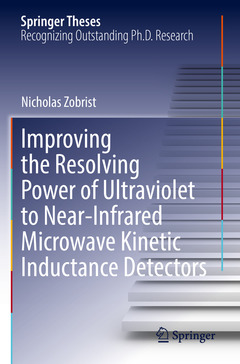Description
Improving the Resolving Power of Ultraviolet to Near-Infrared Microwave Kinetic Inductance Detectors, 1st ed. 2022
Springer Theses Series
Language: English
Subjects for Improving the Resolving Power of Ultraviolet to...:
Publication date: 12-2023
123 p. · 15.5x23.5 cm · Paperback
Publication date: 12-2022
123 p. · 15.5x23.5 cm · Hardback
Description
/li>Contents
/li>Biography
/li>Comment
/li>
Nicholas Zobrist’s professional experience spans a wide range of low temperature physics from dark matter detection to quantum limited amplification. He received his Ph.D. from the University of California, Santa Barbara in June 2022. At Santa Barbara, Nicholas worked on the design and development of superconducting sensors for astrophysical measurements, specifically for measuring the properties of planets orbiting other stars. Instruments that he’s contributed to in this vein have been deployed at Palomar Observatory and the Subaru telescope on Mauna Kea. Additionally, in 2017 he was awarded a NASA fellowship for improving the energy resolution of these devices.
These books may interest you

Microwave Cavities and Detectors for Axion ResearchProceedings of the 2nd International Workshop 105.49 €



